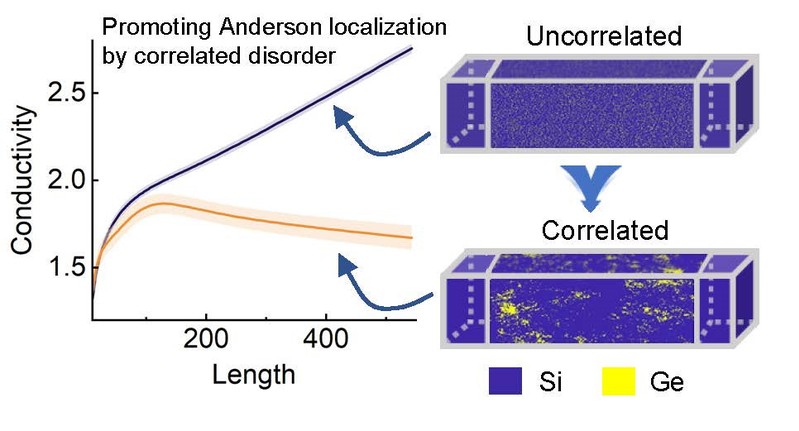Professor Yi Hongliang's team from the School of Energy Science and Engineering at Harbin Institute of Technology (HIT) has recently made a significant breakthrough in the study of phonon heat transport at the micro–nano scale, discovering a new mechanism to promote low-frequency phonon localization via long-range correlated disorder structures.
The research, Promoting Anderson Localization for Low-Frequency Phonons in SiGe Alloyed Nanowires with Long-Range Correlated Disorder, was published in the world-leading journal ACS Nano.
Phonons are the primary heat carriers in semiconductors and insulators, and their transport properties determine the thermal conductivity of materials. Effectively controlling the heat transport behavior of low-frequency phonons remains a key scientific challenge for developing high-performance thermoelectric materials and micro–nano thermal management technologies, as their long wavelengths make them challenging to scatter via conventional point defects and have been considered resistant to localization in disordered systems.
To address this challenge, Yi's team investigated the influence of long-range-correlated atomic disorder on phonon thermal transport in SiGe alloy nanowires using the Non-Equilibrium Green’s Function (NEGF) method. Their study revealed that when the spatial distribution of Ge atoms exhibits long-range correlations, thermal transport by low-frequency phonons below 2 terahertz is strongly suppressed, resulting in a reduction in thermal conductivity of up to 60 percent.
This finding breaks the limitation of the Rayleigh scattering law on low-frequency phonon scattering and, for the first time theoretically, demonstrates Anderson localization of low-frequency phonons in point-defect systems.
Further analysis showed that strongly correlated disorder transforms phonons in the 0.6-1.2 THz range from diffusive transport to localized states, and induces a transition from ballistic to diffusive transport for phonons below 0.6 THz.
This correlation-induced localization phenomenon leads to a non-monotonic dependence of the nanowire's thermal conductivity on its length – first increasing and then decreasing – exhibiting a pronounced peak, a hallmark of Anderson localization.
The study indicates that by tuning the spatial correlation of atomic distributions in alloys, one can effectively regulate phonon thermal transport in low-dimensional systems, providing a new design strategy for optimizing thermoelectric materials and nano-scale thermal management.

The Anderson localization of low-frequency phonons is promoted by correlated disorder.
HIT is the corresponding institution of the paper. Wei Zhang, a PhD student at HIT, is the first author, with professors Yi Hongliang (HIT) and Xiong Shiyun (Guangdong University of Technology) as the corresponding authors. Professors Guo Yangyu (HIT), Masahiro Nomura (University of Tokyo), and Sebastian Volz (University of Tokyo) also contributed to the research.
This research was supported by the National Natural Science Foundation of China.
Paper link: https://doi.org/10.1021/acsnano.5c10006

